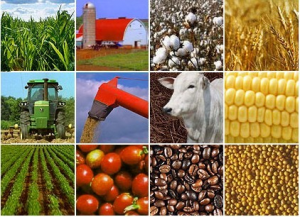News Archives » banks
For Nuns and Analysts Alike, Bank Commodity Earnings are a Mystery August 11th, 2013
 The Oblates are concerned about the lack of disclosure by banks of their commodities market activities. Fr. Seamus Finn, OMI dialogs on behalf of the Oblates with major financial institutions like Goldman Sachs and JP Morgan Chase. He was quoted extensively in a Chicago Tribune article that does a good job of describing the issue. (Read the article)
The Oblates are concerned about the lack of disclosure by banks of their commodities market activities. Fr. Seamus Finn, OMI dialogs on behalf of the Oblates with major financial institutions like Goldman Sachs and JP Morgan Chase. He was quoted extensively in a Chicago Tribune article that does a good job of describing the issue. (Read the article)
“Driven by a determination to invest in a socially conscious way, Finn’s group has been concerned about banks’ commodities activities since 2008, when a spike in energy and agricultural products caused food riots in Africa. The issue is whether banks’ trading activities artificially drive up food prices. … While the country’s largest banks are required to disclose their activities in some consumer-facing businesses such as mortgages, there is no similar requirement for them to do so on the commodities side.”
Interfaith Investors to Score Banks November 6th, 2012
 The Interfaith Center on Corporate Responsibility, an influential investor coalition, will issue scorecards for the seven largest US banks next year, based on factors such as risk management and executive compensation.
The Interfaith Center on Corporate Responsibility, an influential investor coalition, will issue scorecards for the seven largest US banks next year, based on factors such as risk management and executive compensation.
The coalition has been influential in the field of corporate governance, pushing on issues such as “say on pay”, an advisory shareholder vote on executive compensation, which was included in the Dodd-Frank financial reform act.
ICCR has sent questionnaires to the seven largest US banks: Bank of America Merrill Lynch, Bank of New York Mellon, Citigroup, Goldman Sachs, JP Morgan Chase, Morgan Stanley and Wells Fargo. Sustainalytics, a provider of environmental social governance research, is partnering on the research.
Reverend Séamus Finn of the Missionary Oblates of Mary Immaculate said in the organisation’s annual report: “What is frustrating for many of us is the knowledge that the vast majority of these problems can be avoided by adopting the appropriate risk management safeguards and the requisite checks and balances. With each new scandal we think ‘maybe this time they will get it’, and then we open the morning paper to see that we still have work to do.”
Click here to read more »
The Imploding Banking Sector July 24th, 2012
 Read Fr. Finn’s latest blog on Huffington Post – his commentary on the latest implosion of the banking sector. It begins…
Read Fr. Finn’s latest blog on Huffington Post – his commentary on the latest implosion of the banking sector. It begins…
Summer months here in Washington, D.C. are generally characterized by the slower pace that is associated with southern cities and the rush of Congress and government employees to get in some vacationing with their families before Labor Day. Even the traffic reporters usually sprinkle their reports with comments about the decreased traffic flows or the early exits for the eastern shore that usually start on Thursday afternoon.
Unfortunately, if you are on the House Financial Services Committee or the Senate Banking committee or one of the regulators for the numerous corporations that operate in the financial services sector, there has been very little down time since the famous early May JPMC announcement about the huge trading loss in their Chief Investment Office in London. Since then the amount of the loss has more than doubled and numerous investigations into the actions of individuals involved in the loss have been opened. All of these activities promise to keep a number of folks at their desks for longer than expected.
Latest Huffington Blogpost: The Media and the Dynamic Duo June 19th, 2012
 Read the latest Huffington blogpost by Fr. Seamus Finn, OMI who writes scathingly about recent encounters with the CEOs of Goldman Sachs and JP Morgan Chase at their Annual General meetings.
Read the latest Huffington blogpost by Fr. Seamus Finn, OMI who writes scathingly about recent encounters with the CEOs of Goldman Sachs and JP Morgan Chase at their Annual General meetings.
Tell Congress: End Too-Big-To-Fail. Make Banking SAFE May 17th, 2012
 The top five banks now control 52 percent of the financial industry’s assets; they had 17 percent in 1970. The six largest banks control assets equal to 62 percent of the nation’s gross national product. They may be not only too big to fail, but also too big to save.
The top five banks now control 52 percent of the financial industry’s assets; they had 17 percent in 1970. The six largest banks control assets equal to 62 percent of the nation’s gross national product. They may be not only too big to fail, but also too big to save.
The biggest of them, Dimon’s JPMorgan Chase, has $2.1 trillion in assets and more than 239,000 employees. The bank’s recent bad bet that now amounts to $3 trillion, is a clear indication of the need for serious reform.
Sen. Sherrod Brown and Rep. Keith Ellison have introduced a measure to cut too-big-to-fail banks down to size. The SAFE (Safe, Accountable, Fair and Efficient) Banking Act would put in place an important element missing from the financial reform legislation of two years ago: a cap on how big banks can get. The bank lobby defeated all efforts to include a limit on their size.
Now the six largest banks – led by JPMorgan Chase – are collectively larger and more concentrated than they were before they blew up the economy, with the assets they control growing from $6.1 trillion before the collapse to more than $8.5 trillion today, according to Federal Reserve data.
Wall Street lobbyists have successfully delayed and diluted regulations that were supposed to flow from the Wall Street reform bill. And the big banks have ways to push their way around any barriers.
We need a fail-safe. If a bank can’t be too big, then it can’t be too big to fail.
Among the provisions of the Safe Banking Act are that no bank could hold more than 10 percent of all of the insured bank deposits in the country, nor could a bank holding company have non-deposit liabilities greater than 2 percent of the nation’s gross domestic product.
By the standards in the SAFE Banking Act, four existing banks are currently above the size cap—JPMorgan Chase, Bank of America, Citigroup and Wells Fargo—and would have to shrink. This would be a major step in making banking sober—and boring, as it should be—once again.
Thanks to the Campaign for America’s Future for the information on this bill.


